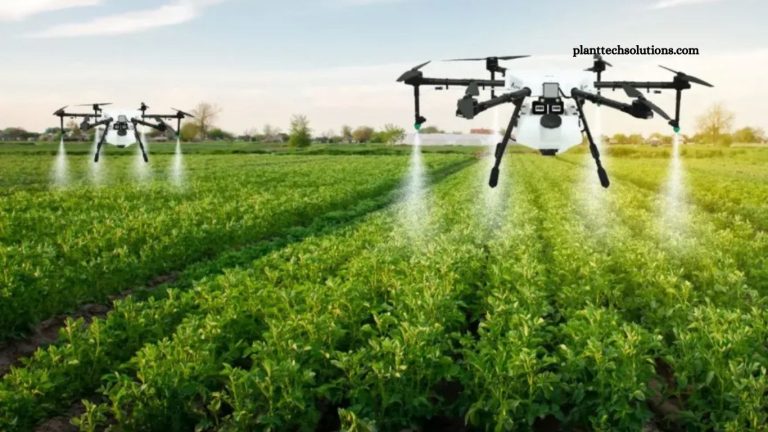guesswork to assess crop health. Today, however, tech-savvy kisans are deploying DJI drones over their fields, capturing multispectral data and optimizing yields like never before. This is Agriculture 2.0 a new era in Indian farming powered by DJI’s cutting-edge drone technology.
Agriculture contributes over 18% to India’s GDP and employs nearly 60% of the population. Even small improvements in yield or efficiency can create a massive national impact. DJI’s Agras and Matrice series are enabling farmers to achieve this transformation, delivering precision farming through aerial insights, variable-rate spraying, and advanced crop health monitoring. By blending tradition with innovation, DJI drones are redefining farming practices and securing India’s agricultural future.
Read More: Optimizing Farm Water Use with AI-Driven Irrigation
Background: DJI’s Growing Footprint in Indian Agriculture
India has rapidly become one of DJI’s most important markets in the agricultural sector. Following the liberalization of drone operations under the Drone Rules 2021 and expanded subsidies from the Ministry of Agriculture & Farmers Welfare, adoption of DJI drones has accelerated across agritech firms and farmer producer organizations (FPOs).
Popular DJI models such as the Agras T40 and Matrice 300 RTK are now widely used for:
- Precision pesticide and fertilizer spraying
- Real-time field mapping
- Crop health analytics
- Post-harvest analysis
Further boosting adoption, the Directorate General of Civil Aviation (DGCA) has approved several DJI drone models under India’s UAS Certification Scheme, making large-scale, commercial agricultural deployment smoother than ever.
Key Features & Benefits of DJI Agriculture Drones
High-Capacity Spraying with DJI Agras T40
The Agras T40 is built for the scale and diversity of Indian farmland. It offers:
- 40L tank capacity with 12m spray width
- Real-time terrain following for uneven fields
- Flow meters for precise chemical application
Why it matters: Crops like sugarcane and paddy demand consistent spraying—too much or too little directly affects yields. The Agras T40 ensures uniform coverage, boosting productivity while reducing chemical misuse.
Smart Mapping with Matrice Series + DJI Terra
The Matrice 300 RTK, when integrated with DJI Terra, enables rapid photogrammetric mapping of large farms.
RTK GPS for centimeter-level accuracy
- Multispectral cameras (e.g., DJI Micasense) detect crop stress early
- Automated, cloud-based processing for actionable insights
Case study: In Maharashtra’s grape belt, a Nashik-based vineyard used the Matrice 300 RTK to detect fungal infections early, saving ₹1.2 lakh annually while reducing pesticide waste.
Variable-Rate Application (VRA)
DJI drones analyze field variability to deliver input precision, spraying more where needed and less where not.
- Cuts input costs by up to 30%
- Reduces environmental impact
- Improves overall crop quality
Relevance: In Punjab and Haryana, where excessive urea use has degraded soils, VRA helps restore balance and sustainability.
Real India Case Study: Telangana’s Drone-Enabled Paddy Revolution
Telangana became one of the first states to pilot drone spraying in paddy fields under the Rythu Bandhu scheme. The results were transformative:
- 20% increase in yields reported by over 500 farmers in Khammam
- 70% reduction in spraying time compared to manual methods
- Minimal human exposure to harmful agrochemicals
Encouraged by these outcomes, the Telangana government began distributing DJI Agras drones to farmers through FPOs, setting a precedent for large-scale drone adoption in Indian agriculture.
Tips & Best Practices for Using DJI Agriculture Drones in India
✅ Obtain UIN (Unique Identification Number) from the DGCA before flying
✅ Choose the right model – Agras for spraying, Matrice for surveying and mapping
✅ Follow local SOPs – pesticide usage must comply with CIBRC regulations
✅ Train operators – leverage DJI-certified training programs via authorized partners
✅ Use NDVI sensors – monitor and analyze crop health with DJI’s multispectral solutions
Frequently Asked Questions
Are DJI agriculture drones legal in India?
Yes. Under the Drone Rules 2021, agricultural drones are permitted. Many DJI models are also approved by the DGCA under the UAS Certification Scheme.
Do farmers need a license to operate DJI drones?
Yes. Operators must register their drone with the DGCA and obtain a UIN (Unique Identification Number). For commercial spraying, remote pilot training is also required.
Which DJI models are most popular in Indian farming?
The DJI Agras T40 for spraying and the Matrice 300 RTK for mapping and crop analytics are widely adopted.
How much can a farmer save using DJI drones?
Savings vary by crop and farm size. On average, farmers save 20–30% on input costs (pesticides, fertilizers) while improving yields.
Are there government subsidies for agricultural drones in India?
Yes. The Ministry of Agriculture & Farmers Welfare provides subsidies (up to 100% for FPOs and 40–50% for individual farmers) to promote drone adoption.
Can DJI drones be used for all crops?
Yes, but they are most effective for crops requiring intensive spraying and monitoring, such as paddy, sugarcane, cotton, and grapes.
Conclusion
DJI drones are ushering in Agriculture 2.0 in India—transforming traditional practices into data-driven, sustainable solutions. From Telangana’s paddy fields to Maharashtra’s vineyards, farmers are seeing tangible benefits: higher yields, reduced costs, and safer working conditions. Backed by government subsidies, DGCA approvals, and advanced technologies like precision spraying and smart mapping, DJI has become a trusted partner in India’s agri-tech revolution.

